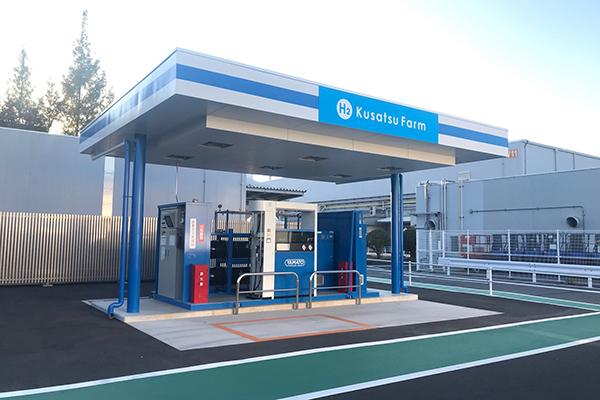

Panasonic Builds New Station, Taps Hydrogen as Energy Source
Panasonic Corporation has built the hydrogen station it named H2 Kusatsu Farm, which is located in Kusatsu City, in Japan's Shiga Prefecture. The move aims to verify practicality of using hydrogen as a next-generation energy source. The company started operation of fuel cell forklifts within the site with hydrogen supplied from the station.
The H2 Kusatsu Farm can stably supply hydrogen regardless of the weather by employing two methods. The first one is to utilize water electrolysis unit that produces hydrogen by electrolyzing water using the power from solar panels. The other is to utilize compact hydrogen production equipment in combination with a gas reforming process with long and accumulated technology from Ene-Farm, a residential natural-gas type fuel cell.

H2 Kusatsu Farm hydrogen station
This system is capable of producing hydrogen to operate approximately two fuel cell forklifts per day and they can be fully charged in approximately 3 minutes. As a result, these forklifts can be efficiently operated with limited time compared to battery-powered forklifts which require longer charging times. Fuel cell forklifts will carry finished products at the Ene-Farm factory. Panasonic will accelerate the development of technology for hydrogen production equipment while verifying the stable operability and economic viability of hydrogen energy.
Because hydrogen is a clean form of energy, it can be stably supplied and can also be easily transported and stored for a long time.

 English
English Japanese
Japanese